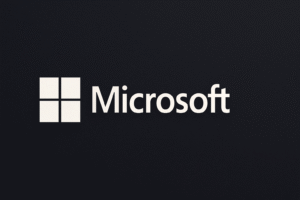Automation has emerged as a critical strategy for individual consumers seeking to enhance their financial health and cultivate a habit of saving. As more people navigate the complexities of modern financial management, tools that streamline saving processes are not just convenient; they are becoming essential for those aiming to achieve their financial goals with minimal effort.
Understanding Financial Automation
Financial automation refers to technologies that allow individuals to handle their savings, investments, and budgeting more effectively, while minimizing the need for active engagement. This can include everything from automatically transferring funds into a savings account to setting up recurring investment contributions.
According to a report by the American Bankers Association, nearly 80% of Americans believe that automating their savings can lead to better budgeting and financial management. In an environment where managing multiple financial responsibilities can be overwhelming, automation provides a practical solution.
Market Impact
The broader impact of financial automation extends to the financial services industry itself. Traditional banks and fintech companies have begun investing heavily in automation technologies. A recent analysis by McKinsey & Company indicates that an increase in the adoption of automated savings tools could potentially contribute to a $3 trillion growth in retail banking globally by 2030.
For instance, apps like Acorns and Digit enable users to save small amounts of money based on their spending habits, effectively allowing them to save without consciously thinking about it. This has led to notable increases in savings rates among users, contributing to a cultural shift towards prioritizing savings and investment over spending.
Expert Opinion
Experts agree that automation can be a game-changer for personal finance. “The beauty of automation is that it takes the emotional aspect out of saving. It transforms saving from a deliberate action into an effortless process,” says financial advisor Emily Wilson. She emphasizes that setting up automatic transfers to savings accounts can lead to improved financial outcomes, as individuals are less likely to spend what they don’t see.
Recent data from the Federal Reserve shows that households that automate their savings contribute 30% more to their emergency funds as compared to those who do not. This statistic reflects a growing recognition of how automated tools not only assist in saving but also bolster financial security.
Background
As financial challenges escalate due to economic uncertainties and rising living costs, the need for structured saving mechanisms has never been more pressing. Historically, personal finance relied heavily on manual spreadsheets and traditional budgeting methods, which often proved to be time-consuming and less effective in the long run. However, the advent of fintech has revolutionized this landscape by offering intuitive platforms for managing money.
In recent years, the rise of neobanks—digital-only banks without physical branches—has further fueled the automation trend. They often provide integrated tools that offer users a one-stop solution for their savings, checking, and investing needs, making financial management more cohesive and seamless.
What’s Next
Looking forward, the future of automated saving appears promising. Upcoming innovations in artificial intelligence (AI) and machine learning are expected to enhance the personalization of financial tools, enabling users to receive tailored advice based on their spending patterns and financial goals. Moreover, increasing integration of automation in investment strategies, such as robo-advisors, could simplify investing for millions, leading to exponential growth in personal savings and investment.
As consumers become more aware of the benefits of financial technology, the shift towards automation is likely to accelerate. Financial education campaigns coupled with user-friendly automated tools could empower individuals to take control of their financial futures with unprecedented ease.
In conclusion, integrating automation into personal finance represents a significant opportunity for individuals to streamline their saving techniques and reach their financial aspirations more effortlessly than ever before. By embracing these innovations, consumers position themselves to not only secure their financial health but to thrive in an increasingly complex economic landscape.







